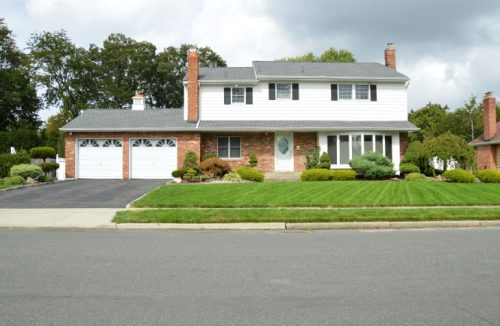9 Common Issues You Need to Watch Out for in Homes from the ‘50s, ‘60s, and ‘70s

If you find yourself swooning over charming old houses when you browse real estate listings, you’re not alone. What’s not to love about a perfectly midcentury modern rambler or a groovy ‘70s conversation pit? Old homes come packed with character, and may be just a few quick updates away from move-in ready. That said, even lovingly cared-for homes can harbor some era-specific issues, so watch out for the following items in case you need to budget for renovations.
The 1950s
Homes from the 1950s are widely coveted for their midcentury-modern appeal. Just remember that these homes are at least 60 years old, so you’ll likely run into a few things that need replacing or repairs.
Mix-and-match flooring: You may find a mix of tiles, linoleum, and carpet throughout the house. Replace these if they’re worn or damaged. Even if they aren’t, updating to hardwood or tile throughout the entire home can modernize the space and increase your resale value.
Single-pane windows: If the home has original windows, it may be worth replacing them. If they’re single-pane, they won’t be as energy-efficient as modern double-pane options.
They may also contain lead paint, which can pose risks to your health. Lastly, newer windows are typically easier to open, close, and clean than their mid-century counterparts.
Too many walls: 1950s homes tend to have separate, closed-off rooms. Don’t let an outdated floor plan stop you from buying your dream home, though. If you’re a fan of open, airy spaces, consider knocking down unnecessary walls to open up the space and allow more natural light to shine through.
The 1960s
Ranch-style homes rose to prominence in the 1960s, often decorated with bright colors and love-it-or-hate-it shag carpets. Now around 50-60 years old, homes of this decade may have these common issues:
Tar-and-gravel roofs: Popular during the ‘50s and ‘60s, the tar-and-gravel roof was a flat roof style made of asphalt, tar, and gravel. Without regular maintenance, this type of roof can collect mold and moisture, which can penetrate other areas of your home. Think about whether you’re willing to take on the upkeep of a tar-and-gravel roof or if it’s possible to replace it with another style.
Wood panel walls: Not all wood paneled walls are created equally. While many groan at the mention of wood paneling, they’re a staple in ‘60s homes. If you’ve found a home with solid wood walls and they’re in good condition, embrace them. Try decorating them with bright-colored art or painting them a cheery color. If they’re manufactured wood or you just don’t love them, remove them and start fresh.
Manufactured wood doors: It’s typical for 1960s homes to feature manufactured wood doors as well. You can spot them by their lightweight, hollow feel. Replacing these with doors you love is an easy opportunity to infuse your personality into your home.
The 1970s
The 1970s ushered in an era of post-and-beam homes, A-frames, and even more ranch-style houses. Now around 40-50 years old, these homes can still be in excellent condition, particularly if lovingly maintained by the previous owners. If you’re eyeing a ‘70s house, consider these potential issues:
Pea-soup green bathrooms: The 1970s are synonymous with pea-soup green bathrooms. If that’s your cup of tea, I support you, but if not, you may need to update original features like bathtubs, toilets, and sinks for a more present-day look.
Outdated kitchens: Your kitchen may also benefit from a facelift, as ‘70s homes often come with yellow linoleum countertops, faded linoleum floors, and dark wood cabinetry that can make the room feel darker than necessary.
Popcorn ceilings: Popcorn ceilings didn’t originate in the ‘70s, but they’re prevalent in homes from this decade. They can collect dirt and cigarette smoke and even make the room look smaller than it is. Occasionally, asbestos lurks in them as well, so it’s a good idea to remove them.
If you find your dream home, don’t let these issues stop you from putting in an offer. Simply use this list to stay informed about the potential renovation and upgrade costs that may arise with older homes. Happy hunting.
See more at…https://www.apartmenttherapy.com/issues-in-homes-from-50s-60s-70s-36996139